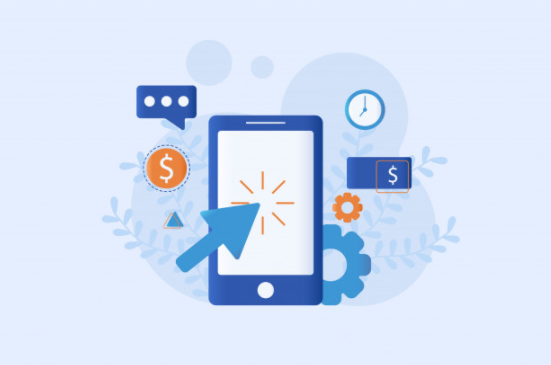Cybercrime is one of the most dangerous threats in the modern-day world and with more and more companies (as well as individual members of the public) wholeheartedly embracing technology, this threat is here to stay and likely only to increase in severity.
With that being said, continue reading for a comprehensive guide to cyber terrorism, how you can protect yourself from the numerous dangers and important, detailed advice for anyone interested in pursuing a career in cyber security.
What Is Cybercrime?
Essentially, the act of cybercrime is criminal activity either using a networked device, a computer or computer network, or else targeting one or more of these themselves. Usually, (even though it is worth noting that there is always an exception to the rule) cybercrime is committed by hackers and cybercriminals and can be used by a lone individual or an entire organization.
The 10 Different Types Of Cybercrime
Obviously, there are a plethora of different ways that an individual or organization can attack using or targeting a computer system, but they can generally be grouped into ten distinct different types. According to Hazim Gaber, as modern technology and computing is constantly developing and improving, so do the tools, techniques and ways a hacker can commit cybercrime, both growing in sophistication levels seemingly in tandem.
The ten fundamental types of cybercrime are as follows:
- Virus Dissemination
- DoS
- Spam E-mail
- Cyber Stalking
- Identity Theft
- Hacking
- Logic Bombing
- Phishing
- Web Jacking
- Data Diddling
Continue reading to learn more detailed information on three of the most well-used by cybercriminals across the length and breadth of the United States and beyond.
Virus Dissemination
Even if you are currently not particularly ‘au fait’ with computer terminology, you will be undoubtedly fully aware of the risk and downright danger of computer viruses both as a danger to personal information and in bringing down businesses.
Viruses are simply small computer programs which either enter a computer system, or else attach themselves to hardware and can very quickly spread to other computers who share the same communal network. Computer viruses quickly and effectively interrupt the basic operation of the computer and either delete or drastically modify the data and information stored within it.
Contrary to popular belief, a Trojan Horse is not actually a virus, but can cause just as much damage and disruption as one by appearing to be a legitimate and expected sent file that subsequently opens and steals all data and information contained on the hard drive.
Cybercriminals use viruses to commence a malware attack on one or more computer systems within the same network and either damage beyond recognition and use, or else steal entirely the important information stored – often confidential and powerful information that they can sell on or use themselves.
Phishing
Phishing is basically the technique used by cybercriminals to extract important and confidential data, often of a financial nature such as credit card numbers, by creating an aesthetically genuine website and attempting to fool the user into giving their details.
Phishing is more often than not successfully achieved using e-mail messaging, hiding the link in an e-mail from a scammer by posing as a legitimate business and heartbreakingly, often older people fall foul to this despicable way of stealing their savings.
Cybercrimes such as phishing are not solely confined to the internet, with the term ‘vishing’ (meaning voice phishing) meaning criminals using the same techniques as they would within an e-mail but using your home or mobile telephone number as a point of contact instead.
Identity Theft
Identity theft is often a topic on the local and national news and is simply when another person, or group of criminals working together, steal your identity and pretend to be you, taking out financial loans, withdrawing all your savings and accessing other benefits all under your name. Credit card fraud, for example, is basically when someone uses your credit card when you have not officially authorized them to do so, and is, unfortunately, simple to commit; if someone steals your credit card, they can easily forge your signature and use it to buy anything they want until you realize and contact your bank to block the card.
DoS
DoS stands for Denial-of-Service and is a cyber-attack which involves overloading a computer server by effectively flooding the system with substantially more requests and demands that it can handle at any one time.
A successful DoS can effectively shut down an entire computer system and even other computer systems which are operating on the same network simultaneously, resulting in nobody being able to access the system in any way. The website is then rendered entirely inoperable and can cause serious and far-reaching problems, especially when the cybercriminals enact a DoS attack on a high profile or global company.
Cyber Stalking
Every single type of cyber-crime is incredibly worrying, damaging and detrimental to both individuals and companies alike, but perhaps one of, if not the, most troubling one of all is that of cyber stalking.
Cyber stalking, or internet stalking, is one of the newest recognized forms of cybercrime. It is when a person who always conceals their identity online relentlessly follows, pursues and intimidates an individual by cowardly hiding behind their computer. Cyber stalking is usually accompanied by physical stalking as well and, thankfully, is finally becoming considered to be as equally as punishable in the eyes of the law.
Women are more often the victims of cyber stalking, but obviously there have been many cases of men being stalked via the internet and in both cases the perpetrator is just as likely to be someone they know personally as a stranger. E-mails, discussion forums, chat rooms and websites all provide the right level of anonymity that cyber stalkers both reside and thrive in.
How Can I Protect Myself From Cybercrime?
Fortunately, as cybercrime has become more and more prevalent as a top concern for both the US government as well as others around the world, guidance on how best to protect yourself and your family from such attacks is both more readily available and more user-friendly.
To protect yourself from phishing, if you receive an e-mail, or text message for that matter, that you have even the slightest suspicion about, check carefully for any spelling mistakes in the text (a common giveaway of cyber criminals), hover your mouse over the link the e-mail is ushering you to follow and check that the address of the link matches exactly with the address in the e-mail body and examine carefully the company ‘logo’ to check its authenticity.
Alongside phishing, identity theft is one of the most common acts of cybercrime to be committed on an individual member of the public and, therefore, is one of the threats that is most important to arm oneself against.
There is a wide plethora of effective ways to entirely minimize the chances of you becoming a victim of identity theft or credit card fraud, including never, under any circumstances, giving away your bank account, credit card or other personal information over the phone and regularly and thoroughly checking any and all credit reports you have signed up for. Other ways to protect yourself from identity fraud involve limiting your exposure, by only having as many credit cards and store cards as absolutely necessary and never carrying your social security card on your person, especially in busy and public places.
Additionally, always password protect your mobile phone, tablet, computer and any other devices you own that contain any personal information of any kind.
How Do I Join The Professional Fight Against Cybercrime?
As well as protecting yourself, your friends and relatives from the threat of cybercrime by educating them on how best to avoid falling for any of the various types of scams, if you really feel dedicated to the cause of stopping major cybercriminals in their proverbial tracks, then you should consider becoming a professional in cybersecurity.
A career in cybercrime is one of the most in-demand and multi-beneficial careers of all, especially in 2022 and as a result would simultaneously be a job that is incredibly fascinating but also genuinely and actively helps protect innocent people not just in this country, but around the world. Another fantastic advantage of entering the world of professional cybersecurity is that the skills you acquire are transferable to a myriad of other subjects and career paths.
One of the quickest and proven to be successful routes into cybersecurity is to first acquire an undergraduate bachelor’s degree in an area such as forensics, network design security or computer science and to then enroll onto a postgraduate Master of Science degree in cybersecurity from a renowned and established institution such as the reputable St. Bonaventure University. Additionally, seeking a part-time, entry level job within the sector, such as a junior analyst or other roles that primarily focus on the prevention of cybercrime rather than penetration testing and security.












